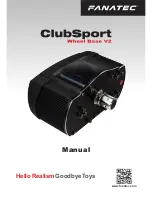
L-VIS User Manual
136
LOYTEC
Version 6.2
LOYTEC electronics GmbH
A control with a fully opaque knob, with no LED cut-outs inside the knob may
have the knob background color unset, as it will never be visible.
In conjunction with the indented style, choosing a half transparent mid-grey as
the indicator fill color creates an overlay effect, where the software drawn
indicator blends nicely with the underlying knob image.
All other properties are set on the
Knob Control
property page. The basic setup of the
control is done on the left side of the property page. It includes the following options:
Range:
Defines the total value range of the knob, from start to end position. Note
that it is valid to set the start value larger than the end value to get a reversed
knob. Currently, the knob always turns clock-wise from start to end position.
Positions:
Number of discrete positions. This setting defines the number of ticks
from start to end position. Note that this includes both end positions. A range of
0-100 in increments of 20 yields 5 intervals and therefore 6 positions total: 0, 20,
40, 60, 80, and 100. It can be set to 0 to let the control calculate a suitable
number of positions automatically.
Snap:
This option causes the knob to snap into place at the nearest position when
the user releases the knob after input. Used in conjunction with a small number of
discrete positions, visualizing the states of a multi-state data point, where only a
certain set of values is acceptable.
Midpoint:
Defines a value which can be considered a neutral position of a two-
way knob. Most often this will be located half way between start and end
position, but it can also be used for other purposes. It influences the way the
backlight is drawn. If unused, it may be set outside the knobs value range.
Gradient:
This option controls if the backlight will be drawn in solid colors or as
a gradient. Depending on the midpoint setting and the backlight mode, different
effects can be archived, which are explained in more detail later on.
Angle:
The amount by which the knob may be turned. This can be anything from
a few degrees up to almost 360 degrees. Especially when labels are displayed,
start and end position should not be too close to each other, so a maximum of
around 350 degrees is advisable. The typical angle for a rotating knob is around
275 degrees.
Rotation:
Clockwise rotation of the knob start and knob end position. At 0
degrees, the knob position will be facing up when turned half way from start to
end, which is the typical way a real knob would be mounted on a control panel.
Center Offset:
Offset of the knob center in X and Y direction, relative to the
center of the control. At 0/0, the knob will be centered in the control window.
When using faceplate images where the knob is located off center, or when the
knob has a small opening angle and needs labels only on one side, the knob
center may be shifted to the desired position using these values.
Knob Radius:
The desired radius of the knob. This will define the outer edge of
the knob, to which a number of other elements are relative. When using a
faceplate image with integrated knob, this value must be adjusted to fit the image.
Show Ticks:
Draw tick marks onto the faceplate. Turn off when using a
faceplate image which already contains ticks or when no ticks are desired. Note
that for calculation of the active area for input, tick mark dimensions may still
need to be entered to match the ticks on the faceplate image.
















































